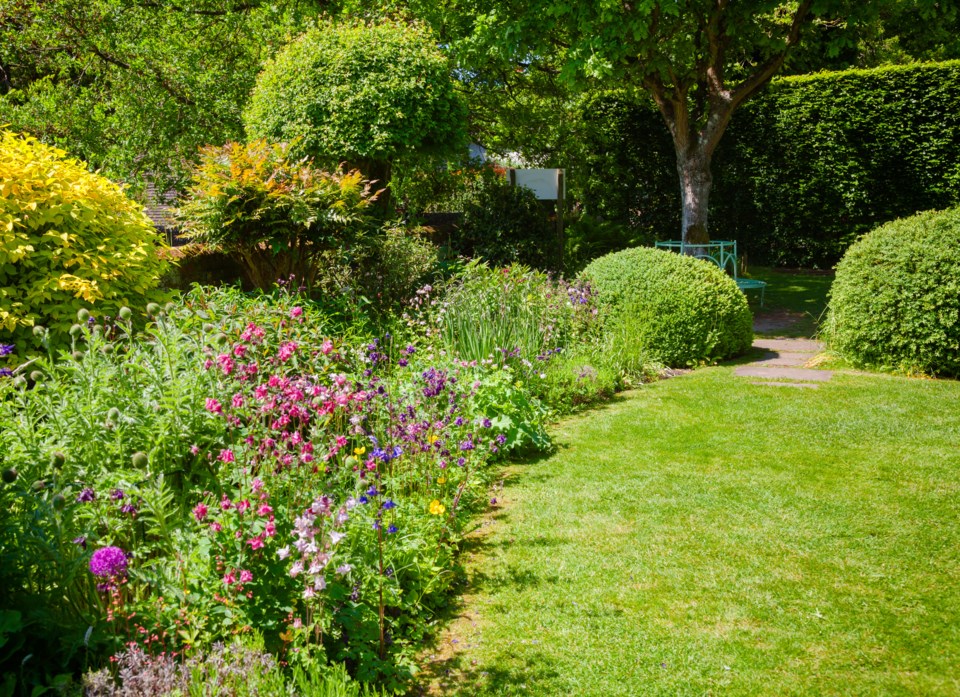Municipalities have the power to help pollinator-friendly gardens flourish — but first, they need to nix restrictive bylaws, environmental groups say.
If people want to ditch their traditional lawn in favour of a “habitat garden” full of native plants, they could find themselves in violation of local bylaws that cast vague prohibitions on “weeds” and restrict biodiversity. For example, in 2020, a couple in Smith Falls, Ont., were ordered to remove elements of their naturalized garden — like a birch log used by various insects and wildlife — to comply with the town’s property standards bylaw. The whole saga spanned 18 months and involved a tribunal hearing, but Beth and Craig Sinclair eventually prevailed and the town rescinded the order in May 2022.
Beyond giving pollinators a much-needed hand, habitat gardens and natural lawns have myriad benefits.
Climate change — driven largely by humans burning fossil fuels like coal, oil and gas — is leading to more intense heat waves and these gardens have a cooling effect that helps keep temperatures down in cities. They require far less water, sequester more carbon and are easier to maintain than traditional lawns. And, when a big storm comes, these native plants absorb excess stormwater and reduce soil erosion.
“Habitat gardens'' are designed to attract wildlife and pollinators (like bees and butterflies) and are cared for differently than a standard lawn and garden.
Instead of raking fallen leaves, you might leave them to decompose over the winter as part of the natural cycle. It’s the same with old plant stems or other plant material like logs — but neighbours can object to the “messiness” of decomposing plants on a lawn, and municipal bylaws discourage these practices with measures like height restrictions.
“Amid a biodiversity crisis with an alarming decline of pollinators, municipalities should be making it easier, not harder, for residents to foster gardens where native plants thrive," said environmental writer Lorraine Johnson, one of the signatories to an open letter published by conservation groups on July 22. Factors driving this decline in pollinators include pesticide use, proliferation of non-native species, habitat loss and climate change.
Receiving a bylaw notice is a stressful experience that has landed some homeowners in prolonged legal battles, Johnson explained. For many people, a threatening infraction notice is enough for them to cut down or abandon their garden because the alternative is potentially a lot of conflict, time and money, she said.
These policies just “place barriers in the way of people who wanted to do something positive for the environment,” Johnson said.
Canadian municipalities need to update their rules to focus on health and safety, rather than aesthetics, argued the open letter penned by the Canadian Society of Landscape Architects, the Canadian Wildlife Federation, the David Suzuki Foundation and Toronto Metropolitan University’s Ecological Design Lab.
The conservation groups call for municipalities to work with Indigenous communities to create a clear list of prohibited plants, rather than using the term “weeds” which could be subjectively applied to native species or used to crack down on a “messy” — but ecologically healthy — garden.
There are typically height restrictions so people don’t let their lawns grow out of control and these standards should be rewritten to exclude biodiverse gardens, the groups say.
Johnson, who has been writing books about native plant gardening for more than 30 years, said there is a big groundswell of support for naturalization, particularly as people become more aware of the threats climate change and biodiversity loss pose.
“Revising these outdated grass and weed bylaws and changing enforcement for the better is really supporting this groundswell of interest in action, in positive action, to really do something about global challenges at a local level,” Johnson said.
She said one victory came from the City of Kingston, which recently revised its bylaws to remove aesthetic terms and create a list of prohibited plants, so enforcement officers aren’t left to decide what qualifies as a weed.



